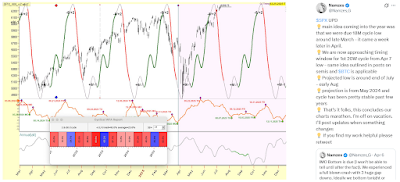The S&P 500 has rallied about 25% in 3 months to hit record highs, which seems impressive. But it is only 2% above the February peak; i.e., over the last 5 months, it is up 5% at an annualized rate. And year-to-date, it is up 6.5%, or 12.5% at an annualized rate. In historical context, these numbers do not stand out.
The S&P 500 has just caught back up to the middle of its post Global Financial Crisis channel,
and price gain so far this year is in line with the long-run median outside of recessions.
The median annual gain for the S&P 500 over the last 100 years is about 11.5%. And if one were to look only at years without recessions, it is 13%; for those with positive returns, the median is a whopping 19.5%. Indeed, the S&P 500 trends upward over time with occasional selloffs, and over the last 15 years—i.e., since the Global Financial Crisis (2007–2009)—it has been in a strong but wide channel rising at an annual rate of 12.5%. The rally has just taken it back to the middle of this channel, where it was at the February peak. and it's the same for election years (red boxes).



















